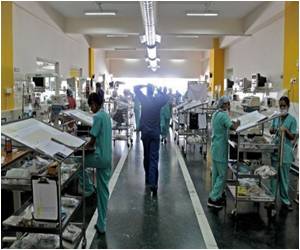After switching to high-deductible health plans (HDHPs) in the US, men make fewer emergency department visits for even severe problems—which may lead to a later increase in hospitalization rates.

In contrast, women respond to HDHPs more appropriately, reducing emergency visits only for less-severe problems. The gender differences raise concerns that "[M]en who transition to HDHPs may forego needed care in the immediate term, resulting in delays or increased severity of illness when care is later sought and received," according to the study by Katy B. Kozhimannil, PhD, MPA, of University of Minnesota School of Public Health, Minneapolis, and colleagues.
When Deductibles Rise, Men Avoid the Emergency Room The researchers analyzed data from a large insurance plan on members whose employers had mandated a switch to an HDHP. These increasingly popular plans feature lower premiums—but also have higher annual deductibles, which members must typically pay out of pocket. Members in the HDHPs had individual deductibles ranging from US$500 to $2,000, with family deductibles of US$1,000 to $4,000.
For the study, changes in health care use in the first two years were assessed for approximately 6,000 men and 6,500 women in the US who switched to an HDHP. Trends were compared with men and women who remained in a traditional HMO plan.
In the year after transition to an HDHP, men made significantly fewer emergency department visits. Visits for low- and intermediate-severity problems decreased by 21 percent, while high-severity visits decreased by 34 percent, compared to men who remained in HMOs.
Women also made fewer emergency visits after switching to an HDHP, including a 27 percent reduction in low-severity visits. However, for women there was no decrease in visits for more severe problems.
Advertisement
High-deductible plans are an increasingly popular way to "incentivize members to reduce inappropriate health care"—such as going to the emergency room for less-severe problems—"while maintaining appropriate use of preventive and necessary services." The new study is one of the first to look at possible gender differences in responses to HDHPs.
Advertisement
The study raises concerns about some possible unintended consequences of HDHPs—especially among men, who may delay or reduce necessary care when out-of-pocket costs go up. Dr Kozhimannil and coauthors suggest that health plans and employers may want to develop educational programs to inform HDHP members about their benefits, and the risks of avoiding needed care because of costs. They add, "Employers that primarily hire men might want to carefully consider whether HDHPs are the optimal choice of coverage."
"As a clinician, our results weren't highly surprising because I often see men hesitant to come to the doctor for a variety of reasons," adds Dr Frank Wharam of Harvard Pilgrim Health Care Institute, senior author of the new study. "But from a research perspective, we don't usually think of men as vulnerable to health policies."
"The study points to a general lack of understanding of how modern high-deductible plans affect important patient subgroups," Dr Wharam adds. "The Affordable Care Act will greatly expand high-deductible insurance, and research on potentially vulnerable populations is urgently needed."
Source-Eurekalert















